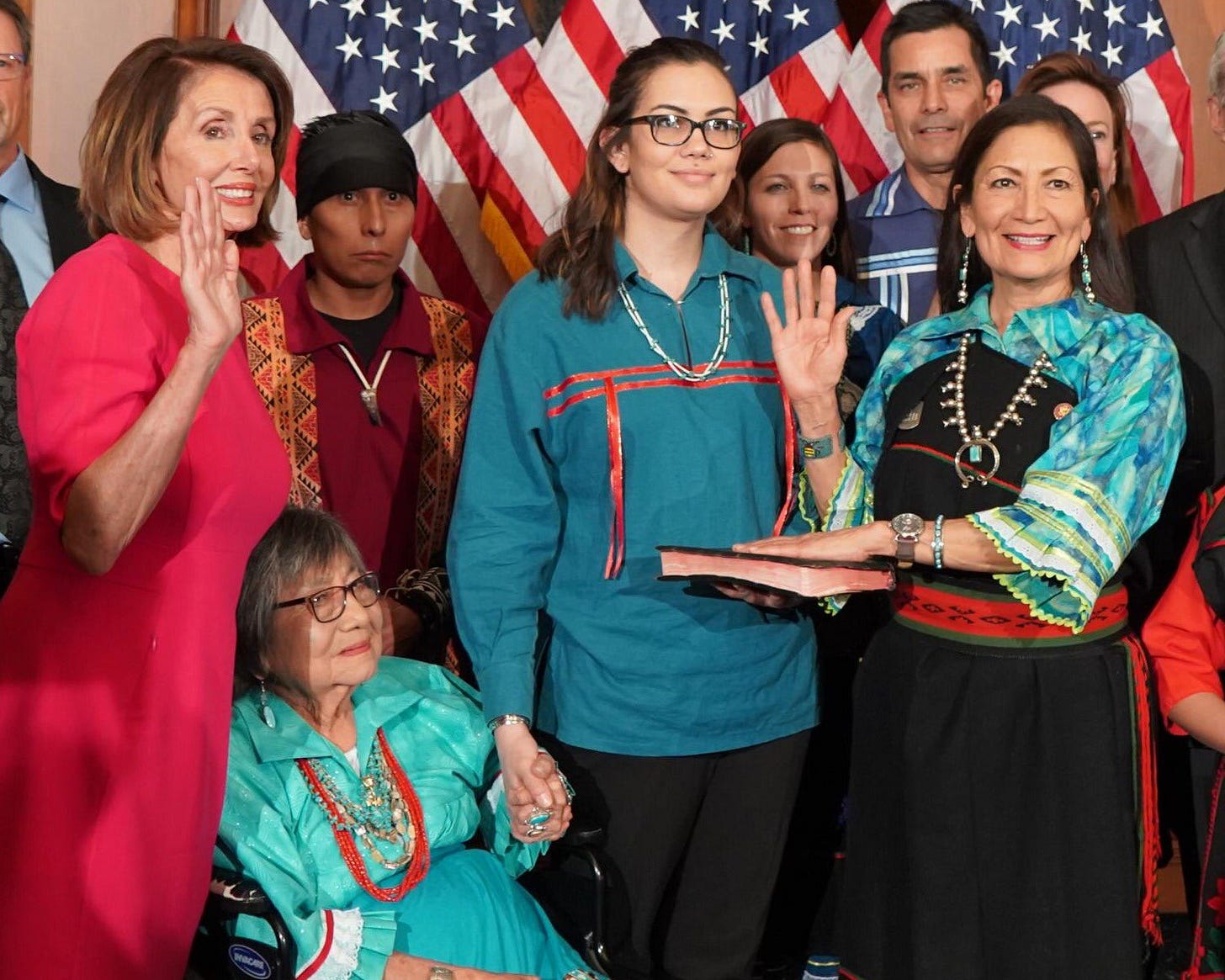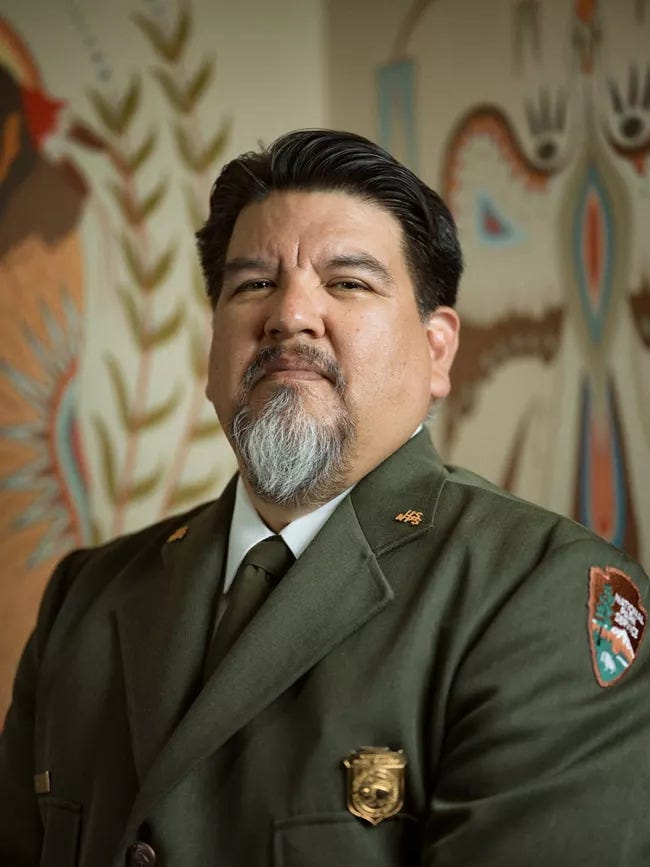DOGE-ing the National Parks II: Claw back DEI
Like everything else in Trumplandia, the parks will help keep white folks on top.
Right from their beginning, the national parks — like the United States itself — bore the indelible hue of racism. Cast as recreational venues to serve the American public, the parks were indeed designed to meet the needs of educated, elite white folks who wanted to escape the city. The Obama and Biden administrations took small, preliminary steps to address that clear injustice and expand the appeal and the story, even when it was less than flattering. Now Trump, the chaos cowboys of DOGE, and their MAGA allies are wreaking damage meant to dial back the clock and once again enshrine white supremacy in the wild.
The founders of the national park system believed almost to a man — and they were all men — that white folks belonged on top of the heap everywhere, inside the parks and out. Theodore Roosevelt, John Muir, and their peers were perfectly fine with pushing Indigenous peoples off homelands they saw as prospective parks, and they displayed little interest in opening the reserves’ gates to welcome anyone other than white Americans, particularly the well educated and well stationed among them.
This is the mission the parks have served over the past century and a quarter. The National Park Service’s 2023 data shows that 91% of park visitors were white, 6% Asian, 5% Hispanic, and 1% Black. That’s hardly a cross-section of America. In the 2020 U.S. Census, whites made up just under 58% of the population, Hispanics 19%, and Blacks 12%. Asians are the one group whose visitation rate mirrors their overall population numbers.
The tilt toward the upper end of the demographic and economic scale becomes even clearer if you look at income and education. National park visitors are an educated bunch, with 80% having at least a college degree, well over the 31% of the general American population. And more than half make $100,000 or more, a significant cut above the U. S. median household income of just under $81,000.
This imbalance began to be remedied when five Utah tribes proposed designating Bears Ears a national monument under the 1906 Antiquities Act, an idea Barack Obama signed off on in 2016. Determined to undo everything Obama had done, Trump shrank Bears Ears to only 15% of its original size and reduced the tribes’ role to advisory, a move they took as the stay-in-your-place insult it was meant to be. The Biden administration answered by restoring Bears Ears to its original boundaries and then some, as well as elevating the tribes’ role to co-management.

Recognizing the white tilt of public lands, the Biden administration took further measures to ensure that more Americans had a stake in this national legacy. That effort began with President Biden’s selection of Deb Haaland (Laguna Pueblo) as secretary of the Interior, the first Indigenous American to serve as Cabinet secretary. She in turn selected Charles Sams III (Confederated Tribes of the Umatilla Indian Reservation) to head the National Park Service, again the first tribal person in that job.
In a March 2022 hearing before the House’s Natural Resources Committee, Sams outlined where he saw tribes and national parks intersecting:
As Director of the NPS, I am committed to seeking ways to increase opportunities for co-stewardship with Tribes in the interest of all peoples of the United States and in accordance with the laws and policies governing the NPS. The NPS works cooperatively with Tribes in the stewardship of national parks. This co-stewardship takes many forms, including co-management obligations in law, collaborative and cooperative agreements, and self-governance agreements.
Co-management by tribes and NPS is already a fact of life in four units: Arizona’s Canyon de Chelly, Alaska’s Glacier Bay, Florida’s Big Cypress National Preserve, and Minnesota’s Grand Portage. More numerous are collaborations between tribes and NPS, such as the Yurok Tribe’s partnership with NPS and the U. S. Fish and Wildlife Service to return California condors to the skies of the Pacific Northwest. As of late last year, 109 NPS sites have co-stewardship agreements with tribes, with 43 more pending. Another 56 parks have ongoing co-stewardship activities, including telling the stories of the tribes that once lived on what is now NPS land.
Sams also led efforts to use parks to focus on other groups of overlooked Americans as well. Five new sites were added to the Reconstruction Era National Historic Network, which commemorates stories of freedom, struggle, education and self-determination by Black Americans between 1861 to 1900, with another seven brought on just last week. And Yosemite National Park expanded its story to include the long-overlooked contributions of Chinese workers in the late 19th century.
Since Sams left NPS when the Trump 2.0 administration took over on Jan. 20, it’s been a well-greased slide backwards to the bad old days of white supremacy. Following their script across the federal government, DOGE’s chaos cowboys have laid off or transferred more than a quarter of NPS staff while the House GOP’s One Big Ugly Bill on the budget lops off 40% of the agency’s funding.
This madness has method: strangled by too little funding, NPS will have little choice but to cut loose the embarrassing parks and sites — about 350 of the 430+ total — and their messages of diversity, inclusion, and equity.
Up next: That’s the plan.
MAGA tramples American public’s love of public lands
The Project 2025-inflected banter about selling off national parks, monuments, and wildlife refuges to fund the One Big Ugly Bill’s tax cuts for the wealthy runs headlong into public opinion. In a major survey funded by the Trust for Public Land, 74% of respondents opposed shutting down public lands, and 71% stood against selling them to the highest bidder. Whatever the MAGA urge to crush public lands is, it isn’t populism. Nor, ultimately, will it prove to be smart politics.





